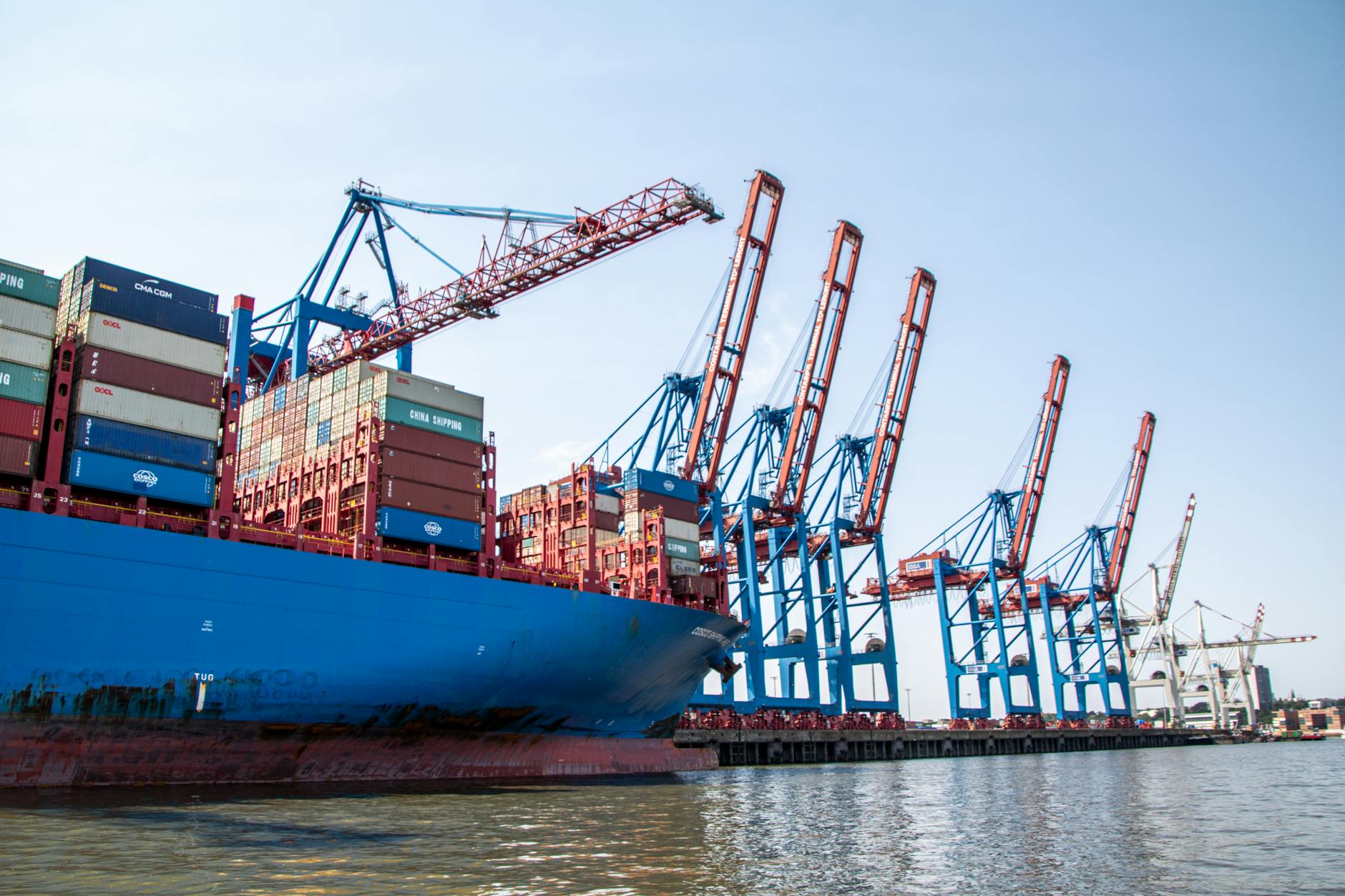How to Integrate 3PL Solutions into Your Australian E-Commerce Business

Evaluating 3PL Benefits
Environmental Impact Reduction
Operating a successful e-commerce business in Australia requires innovation, especially when you consider how important it is to minimise environmental impact. Implementing 3PL solutions is a game-changer. As someone who has explored Fitzroy's vibrant creative workshops, I can tell you that sustainable practices resonate profoundly in this community. By leveraging third-party logistics, businesses can reduce their carbon footprint significantly.
Operational Efficiency Gains
Enhancing operational efficiency is critical for e-commerce entrepreneurs who are aiming to scale their businesses while maintaining sustainability standards. With 3PL logistics, you can streamline order fulfilment, optimise inventory management, and cut down on logistical costs. Imagine the seamless functionality akin to efficient establishments in the South Melbourne Market—3PL solutions provide that kind of fluidity in operations by using strategically located warehouses and tech-driven processes.
Customer Satisfaction Improvement
In an era where customer satisfaction is pivotal, 3PL solutions offer a boost to your service levels. With reliable and timely deliveries, your online customers will experience enhanced satisfaction akin to a personalised shopping experience. Using advanced tracking technologies and robust supply chain capabilities, third-party logistics providers can help you reduce delivery times, ensuring your customers are as pleased as art enthusiasts are at the artisan showcases at Queen Victoria Market.
By adopting these 3PL solutions, your business not only becomes more efficient but also champions sustainability and customer satisfaction.
Choosing the Right Partner
Choosing the right third-party logistics (3PL) partner is crucial for streamlining your e-commerce operations, especially within Melbourne's innovative marketplace. While wandering through Fitzroy's creative workshops, one can draw parallels to finding a logistics partner who embraces creativity and problem-solving. There's a need to align on sustainability, which isn’t just a buzzword but a core value in our approach. Many 3PL providers offer solutions that encapsulate these values, ensuring seamless order fulfilment that reduces environmental impact.
Criteria for Selection
When selecting a 3PL partner, consider the following criteria to ensure they align with your business's identity and goals:
- Reputation and Experience: What is their track record with businesses similar to yours? This ensures reliability and trust in their capabilities.
- Technology and Innovation: Do they use cutting-edge technology to streamline processes? A tech-savvy partner can provide efficiencies that vastly improve service delivery.
- Customer Service: How responsive are they? A partner who prioritises communication can handle the dynamic nature of e-commerce logistics.
Sustainability Alignment
Sustainability should not merely be a checkbox but a crucial component in decision-making. For a brand advocating eco-consciousness, working with a 3PL partner aligned with sustainable practices enhances trust and credibility.
Scalability Considerations
Consider if the 3PL partner can grow alongside your business. A partner that keeps pace with your expansion ensures that logistical operations will not be a bottleneck as your demand increases.
Choosing the right 3PL partner contributes significantly to operational success in e-commerce, ensuring your logistics are as inspiring as the artisan showcases at Queen Victoria Market.
Implementation Strategy
Mapping Your Supply Chain
As you consider the best methodologies to optimise your e-commerce business, mapping your supply chain is indispensable. It's all about crafting a roadmap that aligns operations from the point of origin to the customer's doorstep. Connect with suppliers, manage inventories, and ensure end-to-end visibility. By scrutinising nodes within your supply chain, you bolster resilience and prepare for more efficient pick packing processes. This seamless coordination often reminds me of the dynamic atmosphere at Fitzroy's creative workshops, where precision and harmony are art forms.
Seamless Technology Integration
Integrating technology into your logistics not only enhances operational efficiency but also streamlines your business processes. Using digital tools like inventory management software can synergise with your third-party logistics (3PL) solutions. These applications promise real-time tracking and automatic updates, reducing errors and saving valuable time. Viewed through the lens of an entrepreneur, this step involves merging innovation with workflow, much like harmonising styles at the design retailers of South Melbourne Market.
Aligning Teams and Processes
Aligning teams and processes is key to executing a successful 3PL strategy. Begin by fostering open communication between departments. Cross-training sessions can help unify objectives and methodologies, ensuring everyone is on the same page. Establish clear goals for each team and monitor their progress. Such cohesion is akin to the way artisans exhibit their collective talents at Queen Victoria Market, each contributing uniquely to a shared tapestry of excellence.
Monitoring and Improving
Key Performance Indicators
As an e-commerce entrepreneur in Melbourne, gauging the effectiveness of your integration with third party logistics is crucial. Setting key performance indicators (KPIs) tailored to your business can be transformative. Metrics such as order accuracy rate, delivery time, and inventory turnover provide valuable insights into your logistics framework's strengths and areas for improvement. I remember a creative workshop in Fitzroy where a fellow entrepreneur shared how tracking the rate at which orders are delivered on time can reveal much about your operational efficiency. By monitoring these KPIs, you can ensure your 3PL solution aligns with your overall business goals.
Feedback and Iteration
Incorporating regular feedback and iteration cycles keeps your logistics operations aligned with customer expectations. Gather input from customers, employees, and logistics partners to identify challenges or inefficiencies. Consider using surveys or direct feedback from customer service interactions to glean insights into what’s working and what's not. Tailoring solutions based on this input allows you to iterate and adapt, fostering a responsive and customer-focused operation.
Continuous Optimization
Maintaining a culture of continuous improvement ensures your logistics strategy remains robust. Leveraging data analytics can spotlight areas ripe for optimisation, be it refining routes for faster delivery or enhancing packaging for sustainability. I often find inspiration for innovative solutions while exploring artisan showcases at Queen Victoria Market, where creativity and innovation thrive. By continually optimising, you can enhance efficiency, reduce costs, and ultimately improve customer satisfaction.
Best Practices for 3PL Integration
Transparent Communication
When integrating 3PL solutions into your e-commerce business, open lines of communication are vital. Regular updates from both sides can prevent misunderstandings and ensure a smoother operation. Imagine the dynamic exchanges at a Fitzroy creative workshop—each participant knowing their role and giving real-time feedback to enhance the collective outcome. Similarly, consistent dialogue with your 3PL partner enhances service delivery, aligns goals, and ultimately strengthens your supply chain.
Leveraging Data Analytics
To truly benefit from a 3PL, investing in data analytics is non-negotiable. By using insights gathered from various metrics, you can make informed decisions that lead to increased efficiency and customer satisfaction. Take a cue from the design retailers at South Melbourne Market who use customer data to tailor their offerings, ensuring they match consumer demands. Monitor shipment times, customer feedback, and inventory levels to stay ahead of potential challenges.
Building Long-Term Partnerships
Finally, think about your 3PL relationship like the artisan showcases at Queen Victoria Market—it's not just a single transaction but a lasting partnership built on trust and mutual growth. A strong alliance allows you to scale your operations smoothly, diversify shipping options, and even explore sustainability initiatives that reflect your business values. Nurture these partnerships through shared goals and consistent performance evaluations, ensuring ongoing success and adaptability.
Incorporating these practices will enhance your logistics capabilities, fostering an e-commerce environment that's both innovative and resilient.


